How to Treat Burnout? 4 Actions You Can Take According to an Expert
Last Updated Nov 13, 2025

Key Takeaways
- Burnout stems from three interrelated components that emerge when chronic workplace stress goes unmanaged. These components—exhaustion, cynicism, and inefficacy—shape how employees experience strain and influence the type of support they need most.
- Exhaustion reflects a deep depletion of physical, mental, and emotional energy that develops when people lack control over overwhelming demands. This state makes everyday tasks feel heavier and steadily reduces engagement, especially in cultures that expect constant availability.
- Cynicism arises when employees distance themselves from their work as a way to cope with pressure and unmet expectations. This detachment signals that people no longer feel their efforts matter, creating friction that weakens team morale and overall workplace cohesion.
- Inefficacy develops when stress erodes an employee’s belief in their own competence, often leading them to misinterpret systemic issues as personal failings. This mindset quickly diminishes productivity and heightens turnover risk because individuals feel unable to succeed.
- Targeted strategies such as prioritizing self-care, shifting perspective, reducing exposure to stressors, and seeking supportive relationships help address the specific drivers of burnout. These actions, grounded in Dr. Monique Valcour’s guidance, empower employees and leaders to create more sustainable work environments.
Burnout isn’t rare—it’s affecting one in four American workers right now. If your team’s energy, engagement, or morale seem off, burnout is likely a factor. And its effects go deeper than tired faces: exhaustion slows productivity, emotional detachment undermines collaboration, and self-doubt fuels turnover.
To support your employees—or even yourself—you need to recognize burnout early. But spotting it isn’t always easy. For some, it shows up as constant fatigue. For others, it’s disconnection from their work or creeping feelings of inadequacy.
Understanding burnout’s three core symptoms—exhaustion, cynicism, and inefficacy— is the first step.
This guide will help you identify these warning signs and respond with practical, targeted strategies that meet your people where they are so you can empower them to recover and reconnect.
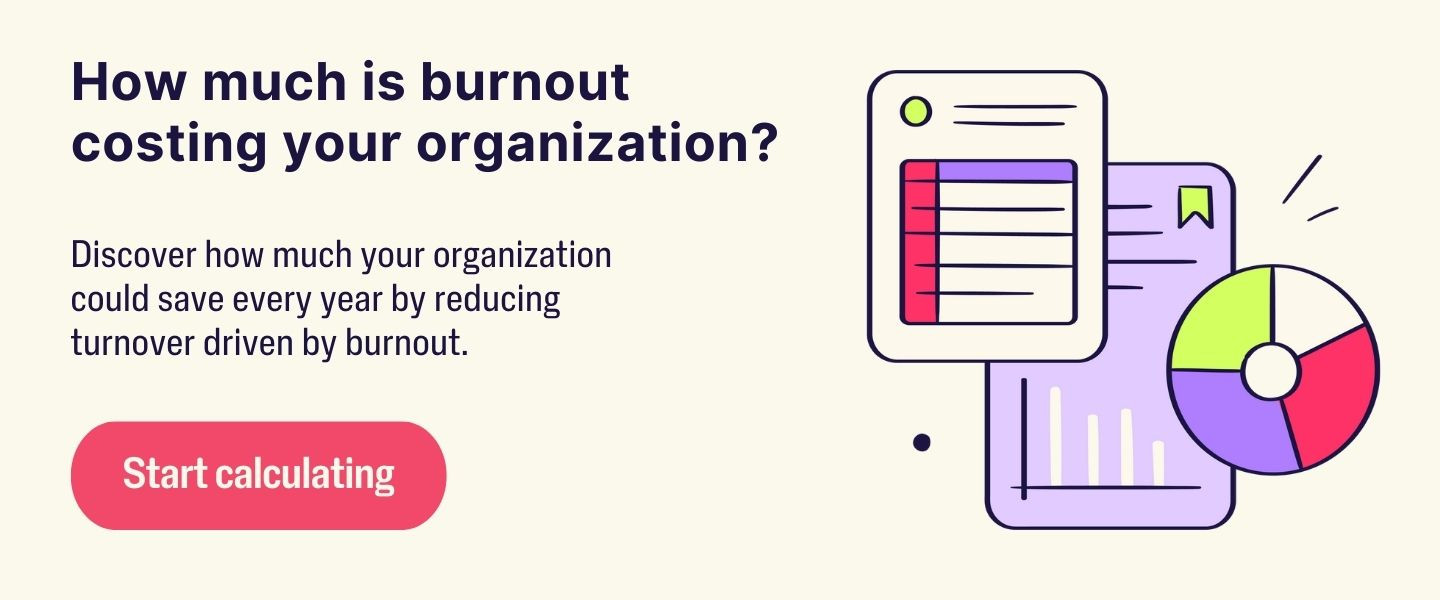
The Three Components of Burnout, Explained
Burnout is a serious social problem that harms people’s health—both physically and mentally. It contributes to decreased productivity in companies and high turnover rates across various roles within organizations. According to the World Health Organization (WHO), burnout is a syndrome resulting from chronic workplace stress that has not been successfully managed.
Burnout is on the rise: More than half of U.S. workers report suffering burnout in the past year, and the share of Glassdoor reviews mentioning burnout jumped 32% year-over-year in the first quarter of 2025. - Burnout Statistics in the United States
Research conducted by psychologist Christina Maslach (among other experts) has helped us understand that burnout symptoms stem from three main components—exhaustion, cynicism, and a sense of inefficacy—which arise as a response to chronic stress factors in the workplace.
Exhaustion
Exhaustion is the core symptom of burnout.It shows up as deep, persistent fatigue—physical, cognitive, and emotional—that saps your team’s energy and effectiveness. This can result from demands created by an organizational culture of constant availability (24/7), intense pressure, or simply having too many tasks on a continuous basis.
The key driver is lack of control. Employees who feel trapped in unmanageable workloads, misaligned roles, or unsupported skill gaps are especially vulnerable. Over time, even simple tasks can feel overwhelming, leading to disengagement.
Cynicism
Cynicism, sometimes called depersonalization, is a psychological self-defense strategy. Employees emotionally distance themselves from their work, leading to negativity, detachment, or indifference toward tasks, colleagues, and customers.
Cynicism often develops in high-pressure environments where employees feel their efforts don’t matter, whether due to work overload, unfair treatment, or limited decision-making power. It signals a breakdown in engagement that, left unaddressed, damages team cohesion and morale.
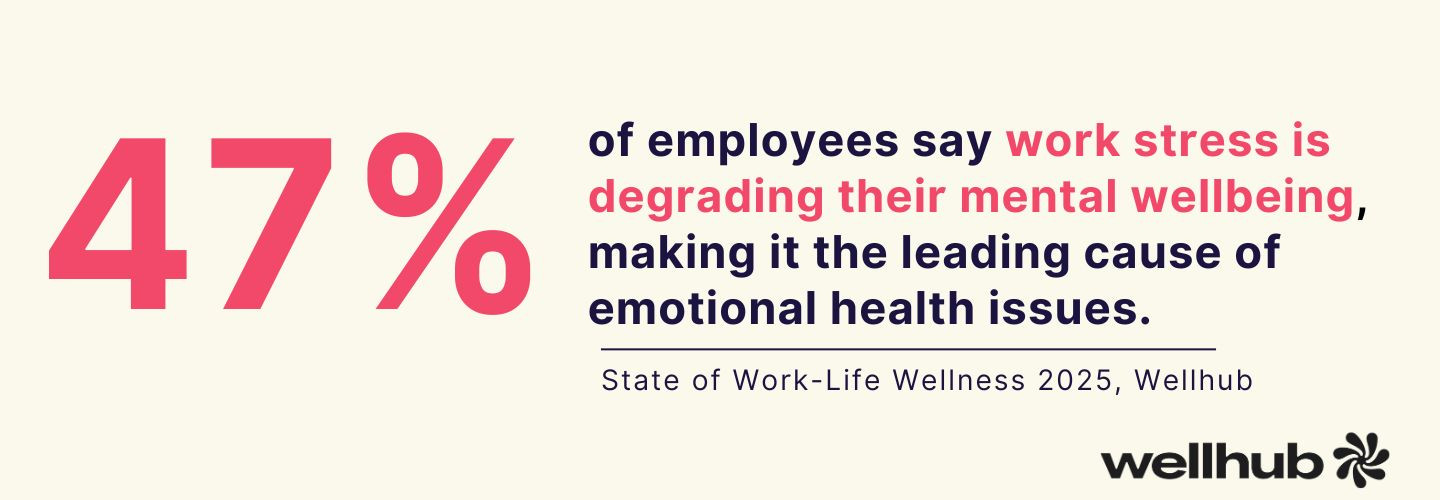
Inefficacy
Inefficacy is the creeping sense that you’re no longer good at your job. As exhaustion and cynicism set in, employees begin to question their skills and abilities, often interpreting stress-induced struggles as personal failures.
When employees stop believing they can succeed, productivity plummets, skyrocketing the risk of turnover.
The Three Elements Are Interconnected
Exhaustion, cynicism, and inefficacy don’t exist in isolation are deeply interconnected. In many cases, one symptom fuels the next.
Spot burnout—22 signs to look forbefore it’s too late.
But not every employee experiences burnout the same way.Some team members may primarily grapple with physical and mental exhaustion without becoming cynical. Others might emotionally withdraw from their work without feeling inadequate. And some may face a combination of high exhaustion and cynicism but still retain confidence in their skills.
Recognizing these distinct burnout profiles can help HR leaders design more personalized interventions. You can then support employee wellbeing in ways that address the root cause for that individual.
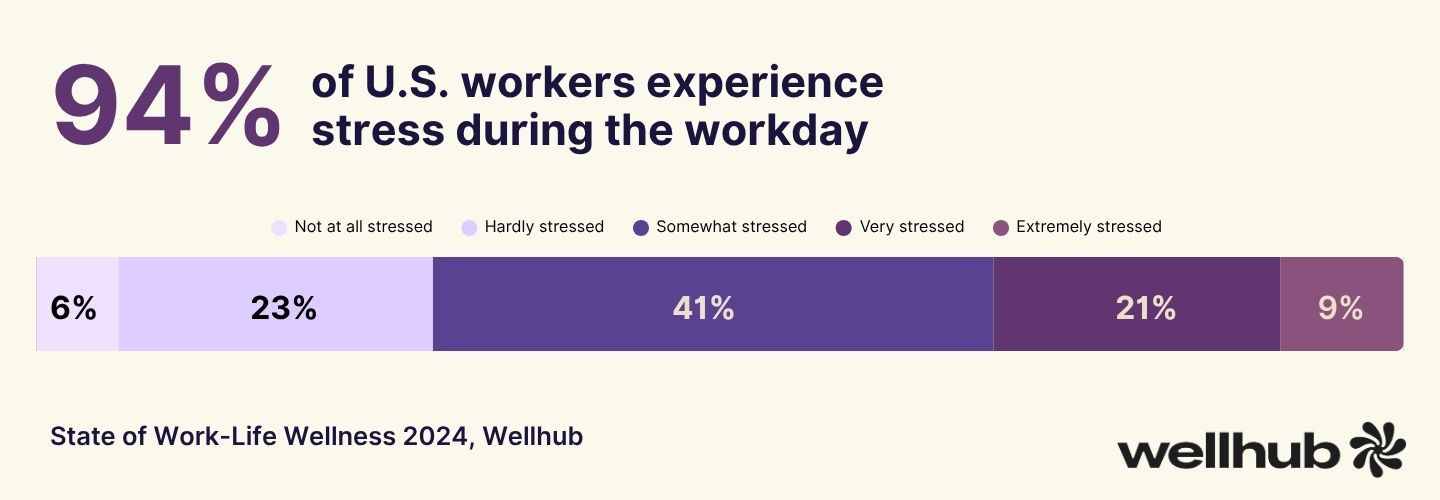
4 Actions That Treat and Combat Workplace Burnout According to Dr. Monique Valcour
While many solutions address all three dimensions of burnout, identifying whether your employees are struggling more with exhaustion, cynicism, or inefficacy can help you deliver targeted support.
These recommendations, inspired by the work of Dr. Monique Valcour—a leadership coach and researcher with over two decades of experience—offer practical strategies to help your teams manage chronic stress and replenish their energy reserves.
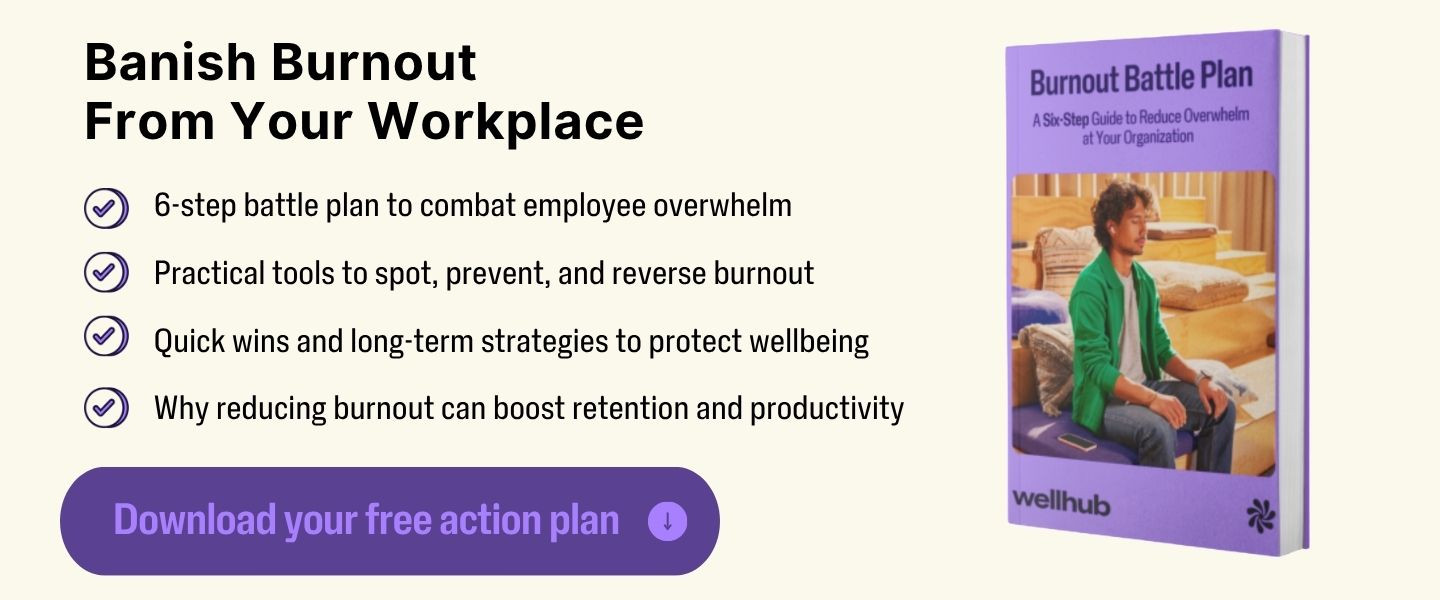
- Prioritize Self-Care
Burnout recovery starts with rebuilding the basics: energy and focus. It’s crucial to prioritize healthy habits related to sleep, nutrition, exercise, and social connection. Also, incorporate practices that promote overall wellbeing, such as meditation, journaling, and spending time in nature.
If You Find It Hard to Fit These Activities Into Your Schedule…
Spend a week analyzing how you’re using your time. For example, you can track this in a dedicated notebook, a spreadsheet, or an app. For each block of time, record what you’re doing, who you’re with, how you feel (on a scale from 1 to 10, where 1 means anger or exhaustion and 10 means joy or energy), and how valuable you consider the activity.
This will help you identify opportunities to reduce your exposure to tasks, people, and situations that negatively affect you; increase your time spent on activities that recharge you; and carve out space for restorative rest and positive moments outside of work.
Managers are burnt out too. Here’s how to combat burnout in leadership.
- Shift Your Perspective
While rest, relaxation, and recovery can ease burnout, reduce cynicism, and improve efficacy, they don’t completely eliminate some of the core causes of burnout.
Take a look around your workplace:
- Do you still have an overwhelming workload that feels impossible to manage?
- Are there constant conflicts within your team?
- Are you lacking the resources to do your job more effectively?
Now, carefully examine your mindset and assumptions. Which aspects of your situation are truly unchangeable, and which could you shift?
Adjusting your perspective on your work environment can help cushion some of the negative impacts, even from the more rigid aspects. If exhaustion is a persistent problem, ask yourself: What tasks—even critical ones—could I delegate to free up time and energy? Are there ways to redesign your role to gain more control or focus on more rewarding tasks?
If cynicism is your primary struggle, can you shield yourself from the parts of your organization that frustrate you, while re-engaging with your specific role and the company as a whole? Could you build supportive, positive relationships to offset the draining ones? And if you’re feeling ineffective, what kind of support or development could you seek? If recognition is lacking, could you engage in personal branding strategies to showcase your work?
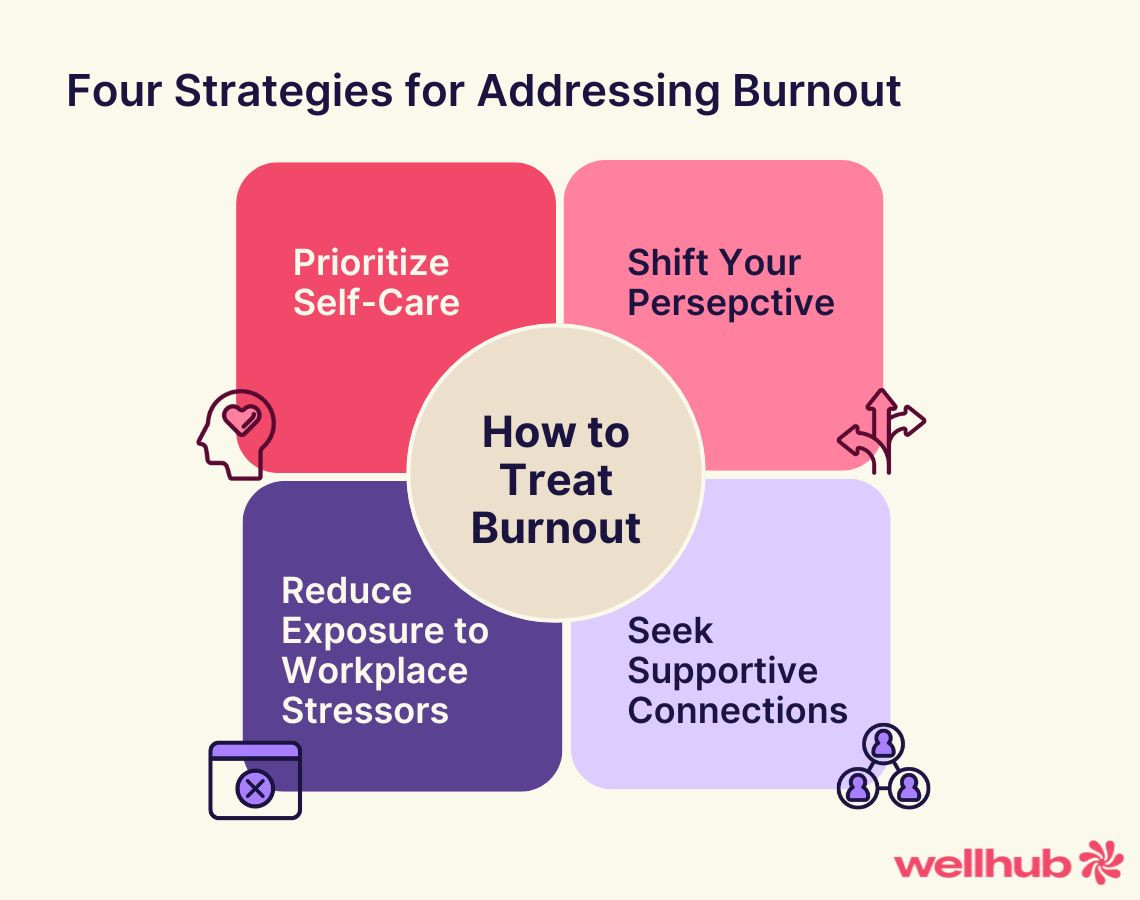
Dr. Monique Valcour shares the example of "Cheryl," a patient who suffered from chronic exhaustion. As part of her recovery, Cheryl began working with an executive coach to reassess and redefine her priorities. “I work in a competitive field and I’m a competitive person, which can distort how you see reality,” she explains. “In the past, I didn’t dare say no to leadership opportunities because I feared that if I did, everything would disappear.”
Now, Cheryl says she’s replaced that scarcity mindset with one that assumes abundance instead. “Today, if I feel overwhelmed, I ask myself: Is there a way to bring joy into this role—or is it time to move on? And I understand that whenever I want to take something on, I need to decide what I’ll let go of to make space.”
- Reduce Your Exposure to Workplace Stressors
You need to focus on the high-value activities and relationships that still trigger unhealthy stress. This means redefining the expectations of colleagues, clients, and even family members regarding what responsibilities you’re willing to take on and how much.
It’s also important to establish ground rules for working with your team. You may encounter resistance at first, but anyone who questions your changes should understand that you’re doing this to improve your long-term productivity (and protect your health).
Bárbara, another of Dr. Valcour’s clients, was very aware of the aspects of her public relations role that put her team at risk of burnout—and she now actively manages them. “There’s constant pressure, both from clients and the media,” she explains. “But many times, what clients label as a crisis isn’t actually a crisis. Part of the job is helping them put things into perspective. And being a good service professional doesn’t mean being a servant. You shouldn’t be regularly sending emails at 11 p.m.”
Cheryl also notes that she’s learned not to “get swept up in the current” of overwhelming demands. She adds, “You have to recognize when saying no is the right answer. And it takes courage and conviction to hold your ground and not feel guilty.”
- Seek Supportive Connections
The best antidote to burnout—especially when driven by cynicism and inefficacy—is to seek out enriching interpersonal interactions that foster both personal and professional growth. Find coaches and mentors who can help you identify and build positive relationships and learning opportunities. Volunteering to mentor others is another particularly effective way to break out of a negative cycle.
Don’t let burnout take hold of your office. Here’s how to prevent burnout in your workforce.
Wellhub Helps You Treat Burnout
Burnout drains energy, fuels cynicism, and erodes confidence. Heavy workloads, constant pressure, and a lack of support leave employees feeling exhausted and disconnected. Without intervention, burnout can spiral into disengagement and turnover.
Wellhub gives employees the tools to recover and build resilience. Activities like fitness classes, meditation, and coaching help people manage stress and reconnect with work. In fact, 75% of employees using Wellhub say their mental wellbeing improved over the past year, compared to just 43% without it. Wellhub users are also more than twice as likely as non-users to report quality sleep, and consistent use leads to even stronger wellbeing gains.
Speak with a Wellhub Wellbeing Specialist to help your team recover from burnout.

Company healthcare costs drop by up to 35% with Wellhub*
See how we can help you reduce your healthcare spending.
Category
Share

The Wellhub Editorial Team empowers HR leaders to support worker wellbeing. Our original research, trend analyses, and helpful how-tos provide the tools they need to improve workforce wellness in today's fast-shifting professional landscape.
Subscribe
Our weekly newsletter is your source of education and inspiration to help you create a corporate wellness program that actually matters.
Subscribe
Our weekly newsletter is your source of education and inspiration to help you create a corporate wellness program that actually matters.
You May Also Like

Corporate Wellness Trends HR Must Know for 2026 | Wellhub
See the top 2026 wellness trends shaping performance, retention, and culture—plus how HR can build a unified, ROI-driven wellbeing strategy.

Wellness Points Programs: Boost Employee Health & Engagement | Wellhub
Turn your workplace wellness strategy around with a points program that rewards healthy behavior with perks, from extra time off to gift cards.

Employee Financial Wellness Programs: Ultimate HR Guide | Wellhub
Create an effective financial wellness program that supports your employees in their financial needs, boosting productivity and retention.